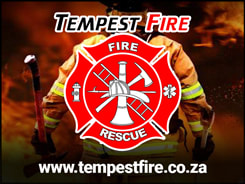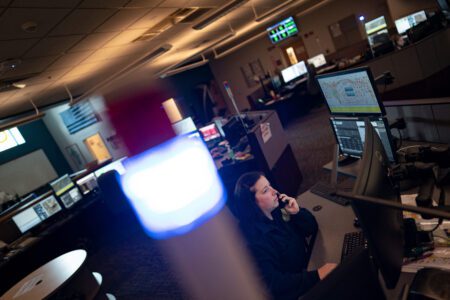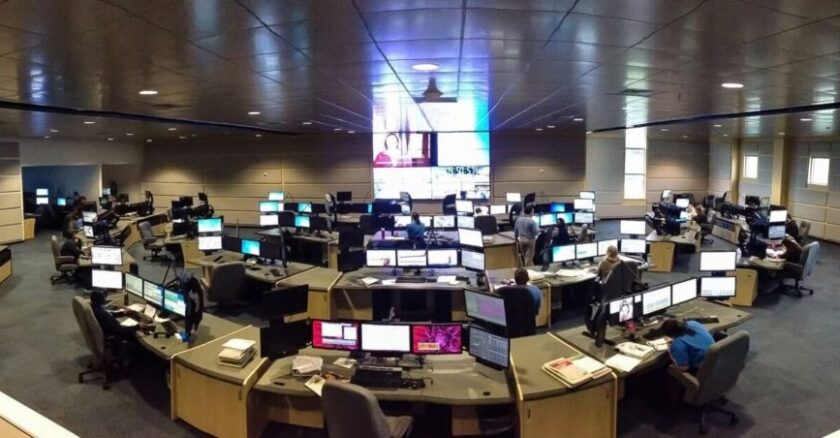- Home
- Magazines
-
Newsletters
- 19 July 2024
- 12 July 2024
- 5 July 2024
- 28 June 2024
- 14 June 2024
- 7 June 2024
- 31 May 2024
- 24 May 2024
- 17 May 2024
- 10 May 2024
- 3 May 2024
- 26 April 2024
- 19 April 2024
- 12 April 2024
- 22 March 2024
- 15 March 2024
- 8 March 2024
- 1 March 2024
- 23 February 2024
- 16 February 2024
- 9 February 2024
- 26 January 2024
- 19 January 2024
- 12 January 2024
- 22 December 2023
- 1 December 2023
- 24 November 2023
- 10 November 2023
- 3 November 2023
- 27 October 2023
- 20 October 2023
- 13 October 2023
- 6 October 2023
- 29 September 2023
- 22 September 2023
- 15 September 2023
- 8 September 2023
- 25 August 2023
- 18 August 2023
- 11 August 2023
- 4 August 2023
- 28 July 2023
- 21 July 2023
- 14 July 2023
- 7 July 2023
- 30 June 2023
- 23 June 2023
- 15 June 2023
- 2 June 2023
- 26 May 2023
- 19 May 2023
- 12 May 2023
- 5 May 2023
- 28 April 2023
- 21 April 2023
- 14 April 2023
- 6 April 2023
- 31 March 2023
- 24 March 2023
- 17 March 2023
- 10 March 2023
- 3 March 2023
- 24 February 2023
- 17 February 2023
- 10 February 2023
- 3 February 2023
- 27 January 2023
- 13 January 2023
- 22 December 2022
- 15 December 2022
- 9 December 2022
- 2 December 2022
- 25 November 2022
- 18 November 2022
- 11 November 2022
- 4 November 2022
- Advertising
- Subscribe
- Articles
-
Galleries
- AOSH Firexpo 2024
- Midvaal Fit to Fight Fire 2024
- WoF KNP 2023 Gallery
- TFA 2023 Gallery
- DMISA Conference 2023
- ETS 2023 Gallery
- Drager Fire Combat and Rescue Challenge 2023
- AOSH Firexpo 2023
- Midvaal Fit to Fight Fire
- WC IFFD 2023
- NMU 13th Fire Management Symposium 2022
- JOIFF Africa Conference 2022
- ETS 2022 Gallery
- TFA 2022 Gallery
- IFFD 2018
- SAESI
- TFA
- WRC 2018
- WRC 2019
- A-OSH/Securex
- IFE AGM 2019
- ETS Ind Fire Comp Nov 2019
- ETS Challenge 2021
- Drager launch
- Drager Fire Combat and Rescue Challenge 2022
- TFA
- Contact
- Home
- Magazines
-
Newsletters
- 19 July 2024
- 12 July 2024
- 5 July 2024
- 28 June 2024
- 14 June 2024
- 7 June 2024
- 31 May 2024
- 24 May 2024
- 17 May 2024
- 10 May 2024
- 3 May 2024
- 26 April 2024
- 19 April 2024
- 12 April 2024
- 22 March 2024
- 15 March 2024
- 8 March 2024
- 1 March 2024
- 23 February 2024
- 16 February 2024
- 9 February 2024
- 26 January 2024
- 19 January 2024
- 12 January 2024
- 22 December 2023
- 1 December 2023
- 24 November 2023
- 10 November 2023
- 3 November 2023
- 27 October 2023
- 20 October 2023
- 13 October 2023
- 6 October 2023
- 29 September 2023
- 22 September 2023
- 15 September 2023
- 8 September 2023
- 25 August 2023
- 18 August 2023
- 11 August 2023
- 4 August 2023
- 28 July 2023
- 21 July 2023
- 14 July 2023
- 7 July 2023
- 30 June 2023
- 23 June 2023
- 15 June 2023
- 2 June 2023
- 26 May 2023
- 19 May 2023
- 12 May 2023
- 5 May 2023
- 28 April 2023
- 21 April 2023
- 14 April 2023
- 6 April 2023
- 31 March 2023
- 24 March 2023
- 17 March 2023
- 10 March 2023
- 3 March 2023
- 24 February 2023
- 17 February 2023
- 10 February 2023
- 3 February 2023
- 27 January 2023
- 13 January 2023
- 22 December 2022
- 15 December 2022
- 9 December 2022
- 2 December 2022
- 25 November 2022
- 18 November 2022
- 11 November 2022
- 4 November 2022
- Advertising
- Subscribe
- Articles
-
Galleries
- AOSH Firexpo 2024
- Midvaal Fit to Fight Fire 2024
- WoF KNP 2023 Gallery
- TFA 2023 Gallery
- DMISA Conference 2023
- ETS 2023 Gallery
- Drager Fire Combat and Rescue Challenge 2023
- AOSH Firexpo 2023
- Midvaal Fit to Fight Fire
- WC IFFD 2023
- NMU 13th Fire Management Symposium 2022
- JOIFF Africa Conference 2022
- ETS 2022 Gallery
- TFA 2022 Gallery
- IFFD 2018
- SAESI
- TFA
- WRC 2018
- WRC 2019
- A-OSH/Securex
- IFE AGM 2019
- ETS Ind Fire Comp Nov 2019
- ETS Challenge 2021
- Drager launch
- Drager Fire Combat and Rescue Challenge 2022
- TFA
- Contact
|
10 November 2023
|
Technology: AI bots deployed to help 911 dispatchers with their workload, US
In the middle of a storm, 911 call centres often find themselves inundated with reports of fallen trees, flooded roads and panicked residents. Every call matters but with multiple reports of the same incident pouring in, the pressure on emergency services can become overwhelming. Amid the chaos, a technological ally has emerged: artificial intelligence. In the United States, AI is quietly transforming how non-emergency calls are handled in dispatch centres. An AI-powered system can triage and coordinate the flood of reports, promptly alerting the relevant agencies.
For now, AI-powered systems only manage non-emergency calls, which typically come from a non-911 phone number but are answered in the same centres, allowing human dispatchers to focus on emergencies.
The integration of AI technology into 911 centres is partly a response to an acute staffing crisis and the pressing need to address the mental health challenges that emergency responders face. While AI-powered systems in 911 centres offer potential benefits, such as managing call surges and reducing dispatcher workloads, concerns linger among experts about the possibility that these systems may overprescribe police response or make mistakes due to biases.
So far, fewer than a dozen localities in seven states across the country are using or testing artificial intelligence in their 911 centres. But, as in other industries, leaders are wondering how AI can transform workplaces.
“For me, I think that the use of AI for non-emergency calls is a fantastic idea,” said Ty Wooten, the director of government affairs for the International Academies of Emergency Dispatch, an organization that helps set standards for emergency dispatch centres. “I see the huge benefit of being able to alleviate those calls out of the 911 centre queue so that the 911 call takers can really focus … on the ones that really matter.”
Emergency call centres are struggling to find workers. Between 2019 and 2022, 1 in 4 jobs at 911 centres were vacant, according to a report published in June of this year from the International Academies of Emergency Dispatch and the National Association of State 911 Administrators. As emergency call centres continue to grapple with understaffing issues, some 911 calls may go unanswered or get stuck in lengthy queues.
“That subsequent loss of staff makes everyone have to work more, which then burns people out and creates more turnover,” Wooten said in an interview. “It’s this vicious cycle.”
For now, there’s little regulation on how artificial intelligence can help. Only a few states have set AI regulatory frameworks. And the definition of AI itself remains uncertain in many states.
Public safety agencies often approach new technologies, including artificial intelligence, with caution because of concerns about service disruptions, said Brandon Abley, the director of technology for the National Emergency Number Association, a nonprofit professional group.
“[Emergency call centres] are not really stumbling over themselves to try and implement AI in their operations because generally, they don’t want huge disruptions to their operations unless they’re very, very certain,” Abley said in an interview with Stateline.
And there could be disadvantages, he added. For example, dispatchers could face heightened mental health challenges if they have to manage more emergency calls because an AI system is taking the bulk of administrative or non-emergency calls.
“We think it looks promising,” Abley said “but we’re also cautious.”
Boosting efficiency and reducing workload
The testing or implementation of AI systems for call-taking in 911 centres already has begun in municipalities in Colorado, Maryland, Missouri, Oregon, South Carolina, Texas and Virginia.
Among the driving forces is the dual role that call centre personnel play. In most public safety centres, the same people answer both emergency and non-emergency calls. With a shrinking workforce, some governments see AI as a solution to alleviate part of the workload.
Among the tech companies offering products to 911 centres is Amazon Web Services, a subsidiary of Amazon that provides cloud computing services, including Amazon Connect, a cloud-based contact centre designed to provide verbal assistance. Carbyne is another software company focused on emergency communications services that uses AI for live two-way translation and triaging calls.
In South Carolina, for example, Amazon Connect is used for non-emergency calls in Charleston County’s Consolidated Emergency Communication Centre. When a caller dials the county’s non-emergency line, Amazon Connect will answer and ask the caller what they need help with. The system will redirect the caller to appropriate resources, allowing human dispatchers to focus on emergency call-taking. If the system cannot understand the caller, it will send the call to a human dispatcher.
The centre spends about $2 800 per month on its Amazon Connect subscription, which Jim Lake, the centre’s director, said is cheaper than hiring staff solely for answering non-emergency calls. The system has reduced the volume of calls to the administrative line by 36 percent since March, Lake told Stateline.
“Those are calls that our 911 public safety telecommunicators don’t want to take. They are not emergencies. So we’re showing them that we’re making their jobs more efficient and giving them the opportunity to do more on those emergency calls,” Lake said.
Several other call centres, including the Arlington County Emergency Communications Centre in Virginia, the St Louis County Police Department in Missouri and the Jefferson County Communications Center Authority in Colorado, also are adopting the Amazon Connect system or similar technologies.
Since Jefferson County began using Amazon Connect’s programme last December, AI has processed about 40 percent of the emergency centre’s administrative calls.
“We’re processing just under a million calls a year, so for us to handle it through technology, freeing up personnel to handle more acuity-style calls, works much better for us,” said Jeff Streeter, the centre’s executive director.
While there are concerns about AI displacing dispatchers’ jobs, many leaders of 911 call centres emphasise that their goal is to make existing roles more manageable.
“I cannot stress enough that it does not take away jobs, especially in the 911 industry. It’s there to help them enhance their job,” said Jacob Saur, the emergency communications centre administrator for Arlington County Public Safety Communications and Emergency Management. “I just cannot see in any way, shape or form an automated bot answering a 911 call.”
Brian Battles, the communications administrative specialist for the St Louis County Police Department’s Bureau of Communications, which oversees the county’s 911 operations, echoed this perspective. “It has been very beneficial to the call takers, who are already overworked,” Battles said. “Anything we can do to relieve that stress while actually providing a more efficient service to the citizens is a no-brainer on our part.”
Addressing bias and funding
Like other new criminal justice technology, concerns about bias loom large with AI systems. “All AI models are only as good as their developers,” Daniela Gilbert, the director of the Vera Institute of Justice’s Redefining Public Safety initiative, wrote in an email. The potential is there, she wrote, for AI to replicate human biases on a large scale. If these systems are [designed] to take calls, rather than assisting call takers, it would remove a human empathy that is so often essential in crisis situations,” Gilbert wrote. “Imagine being in a time of stress and great need and having to negotiate with a bot.”
If, for example, developers have a particular bias that favours police response, AI systems may overprescribe police involvement when alternative resources might be more suitable, Gilbert wrote.
Martha Buyer, a telecommunications law attorney and 911 expert, emphasized that AI systems are prone to errors, which could lead to liability issues. The systems must be capable of accommodating a diverse range of callers, including those who speak languages other than English or have specific needs related to their abilities, Buyer added.
“To have an AI system answer a 911 call, that’s so fraught with liability I don’t even want to think about it,” she said. “Timing is critical.”
Artificial intelligence systems aren’t available everywhere in part because many dispatch call centres find themselves stuck in a technological time warp, relying on old systems that struggle to keep pace with rapid tech advancements. “The reality is the system of 911 as it is today across the country is still kind of operated off technology that was developed in the 1930s,” said Wooten, of the International Academies of Emergency Dispatch. “That technology has to be upgraded, and we have to get that to a point where we understand and it is more equitable.”
Even as cell phones have become ubiquitous, for example, some outdated systems grapple to accurately pinpoint a mobile phone caller’s location. Instead of obtaining precise GPS coordinates, these centres might only get the location of the nearby cell tower, hampering response efforts.
“Nobody ever plans on needing to call 911, so from a government perspective, it’s often pushed to the side in terms of funding,” Buyer said.
Wooten said that despite AI’s potential, many centres need basic tech improvements before getting involved with artificial intelligence. “We really have to get the infrastructure in place and taken care of first before we will ever be able to see the benefits and understanding of what other future technologies, whether that be AI or any other future technology.”
Source: States Newsroom
For now, AI-powered systems only manage non-emergency calls, which typically come from a non-911 phone number but are answered in the same centres, allowing human dispatchers to focus on emergencies.
The integration of AI technology into 911 centres is partly a response to an acute staffing crisis and the pressing need to address the mental health challenges that emergency responders face. While AI-powered systems in 911 centres offer potential benefits, such as managing call surges and reducing dispatcher workloads, concerns linger among experts about the possibility that these systems may overprescribe police response or make mistakes due to biases.
So far, fewer than a dozen localities in seven states across the country are using or testing artificial intelligence in their 911 centres. But, as in other industries, leaders are wondering how AI can transform workplaces.
“For me, I think that the use of AI for non-emergency calls is a fantastic idea,” said Ty Wooten, the director of government affairs for the International Academies of Emergency Dispatch, an organization that helps set standards for emergency dispatch centres. “I see the huge benefit of being able to alleviate those calls out of the 911 centre queue so that the 911 call takers can really focus … on the ones that really matter.”
Emergency call centres are struggling to find workers. Between 2019 and 2022, 1 in 4 jobs at 911 centres were vacant, according to a report published in June of this year from the International Academies of Emergency Dispatch and the National Association of State 911 Administrators. As emergency call centres continue to grapple with understaffing issues, some 911 calls may go unanswered or get stuck in lengthy queues.
“That subsequent loss of staff makes everyone have to work more, which then burns people out and creates more turnover,” Wooten said in an interview. “It’s this vicious cycle.”
For now, there’s little regulation on how artificial intelligence can help. Only a few states have set AI regulatory frameworks. And the definition of AI itself remains uncertain in many states.
Public safety agencies often approach new technologies, including artificial intelligence, with caution because of concerns about service disruptions, said Brandon Abley, the director of technology for the National Emergency Number Association, a nonprofit professional group.
“[Emergency call centres] are not really stumbling over themselves to try and implement AI in their operations because generally, they don’t want huge disruptions to their operations unless they’re very, very certain,” Abley said in an interview with Stateline.
And there could be disadvantages, he added. For example, dispatchers could face heightened mental health challenges if they have to manage more emergency calls because an AI system is taking the bulk of administrative or non-emergency calls.
“We think it looks promising,” Abley said “but we’re also cautious.”
Boosting efficiency and reducing workload
The testing or implementation of AI systems for call-taking in 911 centres already has begun in municipalities in Colorado, Maryland, Missouri, Oregon, South Carolina, Texas and Virginia.
Among the driving forces is the dual role that call centre personnel play. In most public safety centres, the same people answer both emergency and non-emergency calls. With a shrinking workforce, some governments see AI as a solution to alleviate part of the workload.
Among the tech companies offering products to 911 centres is Amazon Web Services, a subsidiary of Amazon that provides cloud computing services, including Amazon Connect, a cloud-based contact centre designed to provide verbal assistance. Carbyne is another software company focused on emergency communications services that uses AI for live two-way translation and triaging calls.
In South Carolina, for example, Amazon Connect is used for non-emergency calls in Charleston County’s Consolidated Emergency Communication Centre. When a caller dials the county’s non-emergency line, Amazon Connect will answer and ask the caller what they need help with. The system will redirect the caller to appropriate resources, allowing human dispatchers to focus on emergency call-taking. If the system cannot understand the caller, it will send the call to a human dispatcher.
The centre spends about $2 800 per month on its Amazon Connect subscription, which Jim Lake, the centre’s director, said is cheaper than hiring staff solely for answering non-emergency calls. The system has reduced the volume of calls to the administrative line by 36 percent since March, Lake told Stateline.
“Those are calls that our 911 public safety telecommunicators don’t want to take. They are not emergencies. So we’re showing them that we’re making their jobs more efficient and giving them the opportunity to do more on those emergency calls,” Lake said.
Several other call centres, including the Arlington County Emergency Communications Centre in Virginia, the St Louis County Police Department in Missouri and the Jefferson County Communications Center Authority in Colorado, also are adopting the Amazon Connect system or similar technologies.
Since Jefferson County began using Amazon Connect’s programme last December, AI has processed about 40 percent of the emergency centre’s administrative calls.
“We’re processing just under a million calls a year, so for us to handle it through technology, freeing up personnel to handle more acuity-style calls, works much better for us,” said Jeff Streeter, the centre’s executive director.
While there are concerns about AI displacing dispatchers’ jobs, many leaders of 911 call centres emphasise that their goal is to make existing roles more manageable.
“I cannot stress enough that it does not take away jobs, especially in the 911 industry. It’s there to help them enhance their job,” said Jacob Saur, the emergency communications centre administrator for Arlington County Public Safety Communications and Emergency Management. “I just cannot see in any way, shape or form an automated bot answering a 911 call.”
Brian Battles, the communications administrative specialist for the St Louis County Police Department’s Bureau of Communications, which oversees the county’s 911 operations, echoed this perspective. “It has been very beneficial to the call takers, who are already overworked,” Battles said. “Anything we can do to relieve that stress while actually providing a more efficient service to the citizens is a no-brainer on our part.”
Addressing bias and funding
Like other new criminal justice technology, concerns about bias loom large with AI systems. “All AI models are only as good as their developers,” Daniela Gilbert, the director of the Vera Institute of Justice’s Redefining Public Safety initiative, wrote in an email. The potential is there, she wrote, for AI to replicate human biases on a large scale. If these systems are [designed] to take calls, rather than assisting call takers, it would remove a human empathy that is so often essential in crisis situations,” Gilbert wrote. “Imagine being in a time of stress and great need and having to negotiate with a bot.”
If, for example, developers have a particular bias that favours police response, AI systems may overprescribe police involvement when alternative resources might be more suitable, Gilbert wrote.
Martha Buyer, a telecommunications law attorney and 911 expert, emphasized that AI systems are prone to errors, which could lead to liability issues. The systems must be capable of accommodating a diverse range of callers, including those who speak languages other than English or have specific needs related to their abilities, Buyer added.
“To have an AI system answer a 911 call, that’s so fraught with liability I don’t even want to think about it,” she said. “Timing is critical.”
Artificial intelligence systems aren’t available everywhere in part because many dispatch call centres find themselves stuck in a technological time warp, relying on old systems that struggle to keep pace with rapid tech advancements. “The reality is the system of 911 as it is today across the country is still kind of operated off technology that was developed in the 1930s,” said Wooten, of the International Academies of Emergency Dispatch. “That technology has to be upgraded, and we have to get that to a point where we understand and it is more equitable.”
Even as cell phones have become ubiquitous, for example, some outdated systems grapple to accurately pinpoint a mobile phone caller’s location. Instead of obtaining precise GPS coordinates, these centres might only get the location of the nearby cell tower, hampering response efforts.
“Nobody ever plans on needing to call 911, so from a government perspective, it’s often pushed to the side in terms of funding,” Buyer said.
Wooten said that despite AI’s potential, many centres need basic tech improvements before getting involved with artificial intelligence. “We really have to get the infrastructure in place and taken care of first before we will ever be able to see the benefits and understanding of what other future technologies, whether that be AI or any other future technology.”
Source: States Newsroom
Quick navigation
Social
|
Who are we?FRI Media (Pty) Ltd is an independent publisher of technical magazines including the well-read and respected Fire and Rescue International, its weekly FRI Newsletter and the Disaster Management Journal. We also offer a complete marketing and publishing package, which include design, printing and corporate wear and gifts. |
Weekly FRI Newsletter |
© Copyright 2018 Fire and Rescue International. All Rights Reserved.






